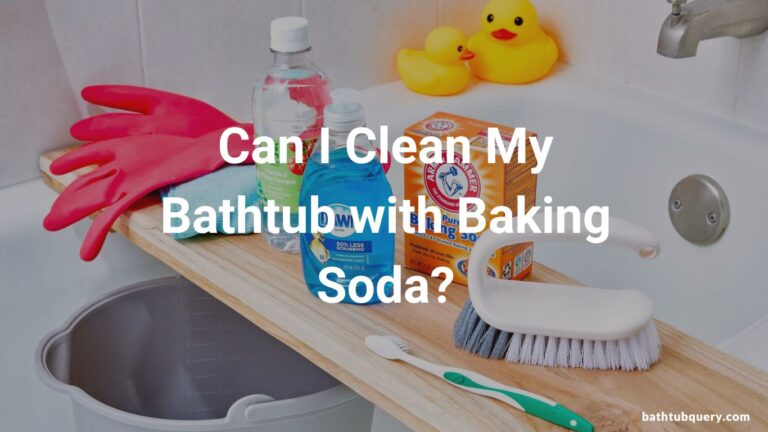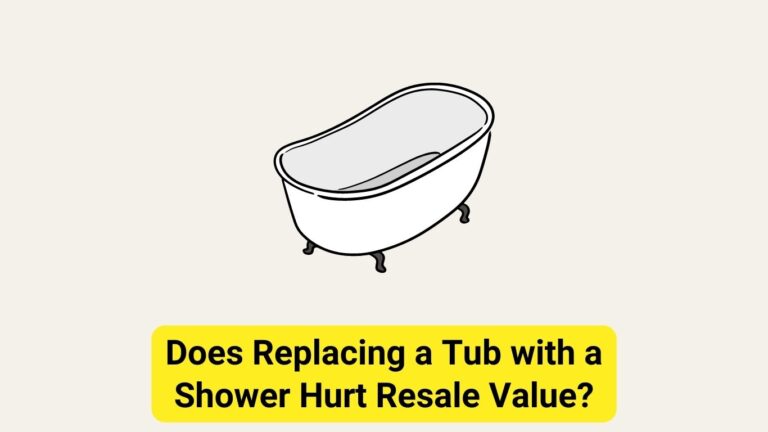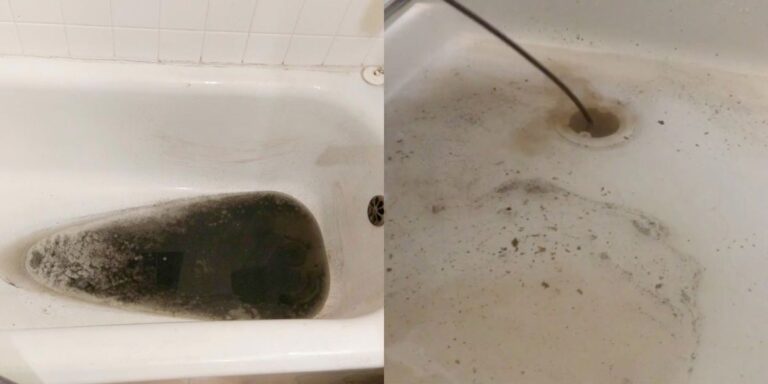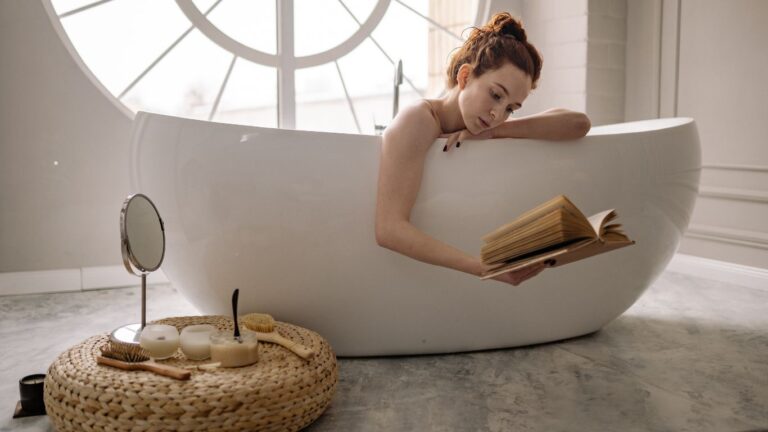6 Most Common Bathtub Drain Stopper Types
Taking a relaxing bath in a tub with warm water and bubbles is one of life’s simple pleasures. But that enjoyment comes to a quick end when you go to drain the tub only to find the stopper isn’t working properly.
Fortunately, being aware of the different types of bathtub drain stoppers, how they work, and their pros and cons can help you select the right one for your tub and keep it operating smoothly. And if you don’t know how does bathtub drain work? Read this post.
Here Are Some Bathtub Drain Stopper Types:
Knowing the fundamentals of how drain stoppers operate makes it easier to diagnose and repair issues when they arise. Now let’s explore the key types of bathtub drain stoppers.
Lift and Turn Stopper
The lift-and-turn is the most common type of bathtub drain stopper. As its name suggests, you lift the stopper up and turn it to open and close the drain. The stopper fits into the drain pipe opening and has threads that allow it to be screwed into place. Turning the stopper clockwise closes it, while turning it counter-clockwise opens it.
Lift and turn stoppers are usually made of metal like brass, zinc, or stainless steel. Their durability makes them prone to getting stuck over time as mineral deposits from the water build up. Let’s look at the pros and cons of this stopper type.
Pros:
- Simple and easy to operate
- Durable metal construction
- A tight seal prevents leaks
- Widely available and inexpensive
Cons:
- Can become stuck over time and be difficult to turn
- Metal can rust and corrode over prolonged use
- It is noisier to operate than other designs
- Not hands-free
To prevent a lift and turn stopper from sticking, regular cleaning is required. Remove the stopper and use a toothbrush or pipe cleaner to gently scrub away any gunk or buildup. Apply petroleum jelly or plumber’s grease to the threads to keep it operating smoothly. If it becomes too stuck, use pliers wrapped in cloth to turn and loosen it.
Toe-Touch Stopper
As the name hints, toe-touch stoppers work by pushing down with your toes to open and close the drain. Rather than lifting, the entire stopper lifts up and down to seal off or open the drain pipe. They have a flat, circular appearance, wider than a lift-and-turn design.
Toe-touch stoppers are typically made from durable plastic. They provide hands-free operation, which some people prefer for convenience and hygiene. Here are the main pros and cons:
Pros:
- Hands-free operation
- It is easy to control water depth by partially opening
- Smooth appearance complements tub style
Cons:
- It is difficult for some people to operate with toes
- Plastic may eventually wear down and break
- Can pop open unexpectedly if not fully closed
To clean a toe-touch stopper, firmly press down on it while turning counterclockwise to unscrew it from the drain pipe. Remove any hair or debris caught on the stopper. Use an old toothbrush and baking soda or vinegar to remove soap scum and mineral deposits.
Be sure to press firmly when closing the stopper with your toes to create a tight seal and prevent it from accidentally opening when the tub has water.
Flip-It Stopper
Flip-it stoppers have a hinged lid attached to a base that fits into the drain opening. The lid can be flipped up to open the drain or down into the closed position. For draining, simply use your toes to flip the hinged lid open.
Flip-it stoppers allow extremely quick and easy draining after you finish bathing. The hinged lid also creates a tight seal when closed to prevent leaks. Here are some more pros and cons:
Pros:
- Very easy to operate
- Fast draining
- Durable rubber construction
- Streamlined modern look
Cons:
- Can accidentally flip open if lid isn’t fully closed
- Hinge may weaken over time
- Rubber can wear down after prolonged use
To clean this type of stopper, unscrew the base from the opening and use a small brush or pipe cleaner to scrub the inside crevices. Remove hair or gunk caught on the hinge. Petroleum jelly can be applied to the hinge to keep it operating smoothly.
Be sure to press down firmly on the lid when closing it to prevent it from flipping open unexpectedly when the tub contains water. Periodically check the rubber seal as well.
Pop-Up Stopper
Pop-up stoppers operate by pulling straight up on a knob or handle to open the drain. Pushing the stopper back down seals the drain again. Underneath, a horizontal cable connects to a lever that raises and lowers the stopper.
The smooth up-and-down operation of a pop-up stopper makes for easy draining. The stopper also creates a tight seal when closed. Here are some more pros and cons:
Pros:
- Smooth operation
- Tight seal
- Easy to adjust cable tension
- Fast draining
Cons:
- Cables may detach or break over time
- Hair and debris can clog cables.
- More complicated mechanics than other designs
To prevent issues, periodically check beneath the tub to ensure that the cable is securely attached to the lever. Adjust the knob to tighten or loosen the cable as needed. Remove any hair or debris caught around the cable.
If the pop-up stopper leaks, try adjusting the knob tighter to increase the seal. You can also try wrapping plumber’s tape around the stopper threads. If problems persist, the stopper assembly may need replacing.
Bathtub Drain Stopper Comparison
To recap, here is an overview comparing the different types of bathtub drain stoppers:
| Type | Operation | Pros | Cons |
|---|---|---|---|
| Lift and Turn | Lift up and turn to open/close | Simple to use, Durable seal | Can rust/stick To clean under tub |
| Toe Touch | Press with toes to open/close | Hands-free Convenient | Hard for some to use |
| Flip-It | Flip hinged lid up/down | Very easy to use Fast draining | Can leak if not fully closed |
| Pop-Up | Pull up knob to open, push down to close | Smooth operation Fast draining | Cables may detach/break Harder to repair |
Choosing the Right Stopper
With the various options available, here are some factors to consider when selecting the best bathtub drain stopper:
- Ease of use – Choose a stopper that’s simple for you to operate. Toe-touch and flip-it designs allow hands-free draining.
- Durability – Metal lift and turn stoppers tend to have the longest lifespan. Seek stoppers made from corrosion-resistant materials.
- Draining speed – Pop-up and flip-it stoppers offer the fastest draining.
- Sealing ability – Ensure the stopper fully seals the drain when closed to prevent leaks.
- ** Appearance** – Select a stopper style that matches your tub’s aesthetics.
- Ease of cleaning – Stoppers that unscrew make it easier to remove hair and gunk.
Properly Maintaining Your Bathtub Drain Stopper
To get the most out of your bathtub drain stopper and prevent problems:
- Periodically remove the stopper and clean it using baking soda, vinegar, or scrub brushes to remove buildup and debris.
- Check that all parts are functioning properly and are not damaged or worn.
- Lubricate moving components with petroleum jelly to prevent sticking.
- Tighten cables or chains to ensure a good seal when closed.
- Adjust knobs or tension as needed to create a tight seal.
- Replace any worn or defective parts.
- Choose corrosion-resistant materials when possible.
Proper maintenance extends the lifespan of your stopper and ensures it operates smoothly for years to come. A little simple care goes a long way.
Conclusion
Understanding the various types of bathtub drain stoppers allows you to select the right one for your needs. Lift and turn, toe-touch, flip-it, and pop-up designs all operate a bit differently while offering their own pros and cons.
Considering factors like ease of use, durability, and drainage speed will enable you to find the ideal stopper. Properly maintaining your stopper through cleaning and part replacement prevents many common issues. With the right stopper and care, you can continue enjoying leisurely soaks in the tub without worrying about the drain.
FAQs
How do I remove my bathtub drain stopper?
To remove a bathtub drain stopper, first try lifting it up and turning it counterclockwise. If it’s stuck, use pliers wrapped in cloth for grip. For toe-touch stoppers, press down while turning. Unscrew flip-it and pop-up stoppers from the drain pipe below.
Why does my bathtub drain slowly?
A bathtub draining slowly is usually caused by buildup of hair, soap scum, and mineral deposits inside the drain or stopper. Remove the stopper and use a wire coat hanger or drain snake to clean out the pipe.
How do I unclog my bathtub drain?
To unclog a bathtub drain, first remove any visible hair. Try a plunger several times. Use a drain snake or baking soda and vinegar treatment. For severe clogs, take apart the piping beneath the tub.
What causes bathtub drains to gurgle?
Gurgling noises when a bathtub drains are often due to partial blockages deeper in the pipework. The buildup of soap scum, hair, and grease causes water to pass slowly. Snaking the drain or using a plunger usually solves it.
Why does my bathtub hold water after draining?
If water remains in the tub after draining, the stopper likely isn’t sealing properly when closed. Remove and inspect the stopper for damage or debris. Adjusting the stopper cable tension or replacing worn parts should fix it.
Read more:
- Bathtub Trip Lever Stuck? Here’s How To Fix It
- Can Mice Come Up The Bathtub Drain?
- Can You Change the Drain on a Bathtub?
- Do Bathtub Drains Have Traps?
- What Size P-Trap For Bathtub?

William J. Bullock is a licensed plumber with over 15 years of experience installing and repairing bathtubs. He runs his own plumbing company in Greenville and serves residential and commercial clients. William is dedicated to providing honest, transparent advice to help homeowners make informed decisions about their bathroom renovations.
He has established expertise in selecting bathtubs, planning custom installations, diagnosing issues, and completing repairs. William aims to share practical tips and reliable recommendations based on extensive hands-on work. When he isn’t on a job site, William enjoys spending time with his family and volunteering at local community events. He takes pride in delivering quality service and enjoys helping people upgrade their homes.







